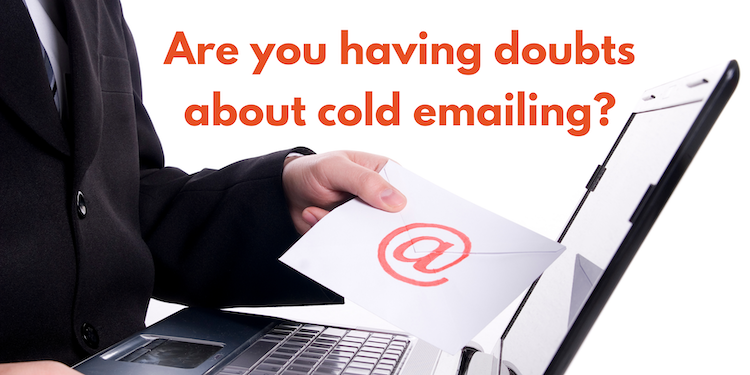According to the Harvard Business Review, cold emailing can work well.

Cold emailing is when you reach out to someone for the first time via email. When you conduct cold outreach, you have yet to establish a relationship with the receiver. You also have no real-time interaction with your audience and are reliant on verbal feedback to move forward.

Cold emailing can seem a little sketchy to some. It’s garnered a bad reputation because there’s a lot of ways to mess it up. It’s also got people questioning its legitimacy.
You may wonder, Can I send out an email to someone I’ve never communicated with before? The short answer is yes, you can. People have used cold emails in email marketing, lead generation, and sales, among others. However, you need to be careful. The last thing you want is for your cold email to be dismissed as spam.
Although cold emailing does have its challenges, it’s still a practice widely used as it can be highly effective.
When done right, cold emailing can be a powerful tool in your marketing arsenal.
It’s a great way to expand your network, reach out to your prospects, and gain traction for your business. Product Hunt, Timehop, and Storefront are just some examples of businesses that have taken advantage of cold emailing to successfully scale their products.
Mobile Monkey CEO Larry King elaborates on “Why Cold Emails are the Best Business Practice for Entrepreneurs”. He cites how it can be the ideal approach when it comes to business development, recruiting, and networking.
It is important to stress that the success of cold emailing relies on creating a connection with your audience. The reason many cold emails flop is essentially that people don’t know how to approach it.
Fortunately, Tucker Max has created A Guide to Cold Calling that was featured on the Harvard Business Review.

Below are some of the key points he made to send out a cold email that garners a positive response.
Personalize your cold email
Know who it is you are writing to. Do your research and personalize the email. When conducting personal cold outreach, that means more than just placing their name at the top of the email. Indicate why you specifically chose to email them, and how their expertise is valuable to you.
“Personalization means that you’ve thought about who this person is, how they see the world, what interests them, and what they want — you’ve developed a “theory of mind” about the recipient. This shows them you have put work into understanding them.”
-Tucker Max
Make a Connection
Remember, this is the first time you’re reaching out to this person. Although you may have done your research to find out about them, they may not know that much about you. Start off with a good impression and show them that you are credible so that they could trust you.
Begin with some common ground, or establish your ties. Let them know who you are and why you are reaching out. Find the connection that will move you from being a stranger to a contact.
Focus on what you can do for them
As your reader is scanning through your email, they are likely looking for one thing: What does this have to do with me?
Give your reader a reason to continue the communication with you by emphasizing what you can do for them. Identify a pain or problem they could have, and offer a solution or a means to help. Your email should highlight how a connection would be beneficial for them, not just how it could help you.
Keep it brief and concise
People are bombarded with marketing messages on the daily. Make sure your email stands out and has value to your audience. Think of your own practices when opening emails. We don’t devote too much time reading through long emails, and we scan for important information before deciding to trash the email or not.
To keep your email from ending up in the trash, try to establish that connection with your reader. Speak to them as if you were having an actual conversation. Be clear about your intentions and show some appreciation and vulnerability. If you are asking for something from your reader, expressing your gratitude could encourage your reader to want to help you. Ultimately, you want your reader to be comfortable enough with you to respond and build on this initial communication.
Cold Emailing Effectivity
Cold emailing can be incredibly effective, but it has to be done right. Those who have mastered the cold email have seen a response rate of 1 in 5 cold emails. Many businesses have used cold emails successfully to build connections in their network, obtain traction for their products, and even make sales. Although cold outreach through email can be tricky to do, a correctly worded cold email is well worth the effort once you start receiving those warm email responses.
You can find Tucker Max’s “Guide to Cold Calling” here.